Chapters
There are endless ways to experience a country, from venturing through its cities and villages and talking to the locals, to booking a guided tour and having all the information delivered to you by a professional. But today, we are going to look at another side of Romania — the creative one.
Street art is a controversial topic. While some consider it vandalism and are working towards stopping it, others appreciate its creativity and encourage it. Nonetheless, street art is a part of each urban area. While it is oftentimes used as a mean to raise awareness of social and political issues, others simply do it for the thrill and the adrenaline rush.
In the early ‘90s, the art of graffiti popped up in Romania as a way to protest the actions of the communist regime. Even though less than 1 year had passed since the reign of Ceausescu ended abruptly, the claws of the system didn’t fade away that fast. The Department of State Security, which was the secret police of the Socialist Republic of Romania, didn’t dissolve until 1991. The increased social control was a direct attack on the trust the Romanians had in one another, and by 1989 one in three Romanians was an informant, condemning those who spoke against the regime. Despite all of the risks, the rebel youth of Bucharest started using graffiti as a mean to send messages to the local authorities which were abusing their positions of power and to encourage people to bind together. One of the first graffiti slogans used in Romania was “Jos Coșmarul”, which roughly translates to “Take down the Nightmare”, and was a reference to the communist leader Nicolae Ceaușescu.
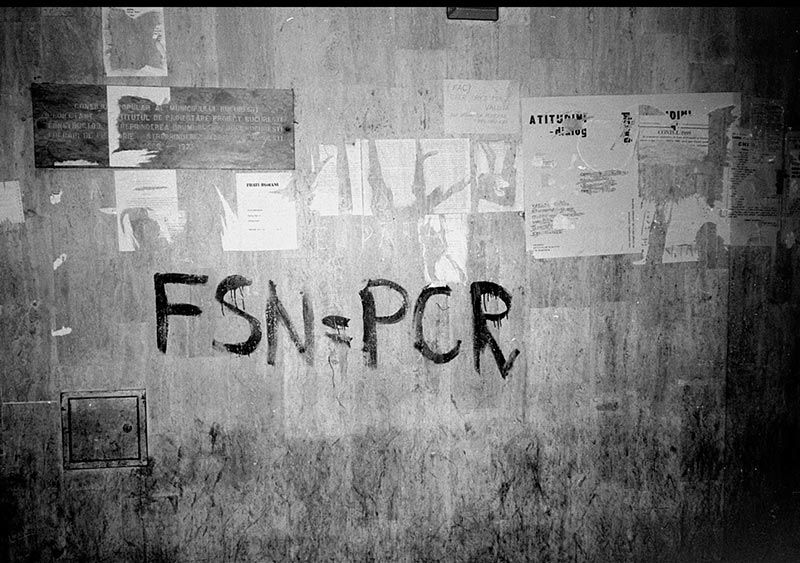
Graffiti accusing the political organization National Salvation Front (Frontul Salvării Naționale) of being the communist party under a different name (Partidul Comunist Român). Photo source: Justiție Oarbă
Over the years, graffiti was used as a form of protest against the corruption of Romania’s political class, targeting political leaders such as Ion Iliescu and condemning their selfish actions, or invoking legendary rulers such as Vlad the Impaler, who was well-known as “a man of unheard cruelty and justice”.
There are several other campaigns that were widely promoted through the use of graffiti and street art, such as “Basarabia Pământ Românesc”, which was meant to support the union of Romania with the Republic of Moldova, or the ecological campaign “Salvați Roșia Montană”, which was the first successful civic movement against a governmental action, and demanded the ceasing of all gold mining activities in the Roșia Montană area, because they posed great contamination risks on the environment.

Graffiti encouraging Romanians to take action towards saving Roșia Montană. Photo source: Wikipedia
Today, the art of graffiti isn’t as frowned upon as 25 years ago, and even though there still are artists that like to create controversy and to point out the issues in our society through bold statements made in public, there are others who use graffiti to beautify the gray streets of Romania and turn them into true works of art.
One example of such a project is Digital Transylvania, which promoted traditional urban art in the city of Târgu Mureș with the purpose of increasing the tourism in the city while beautifying its streets. The project was initiated by the Cultural Association “Green Art Tour” and was implemented with the help of the Târgu Mureș High School of Art.
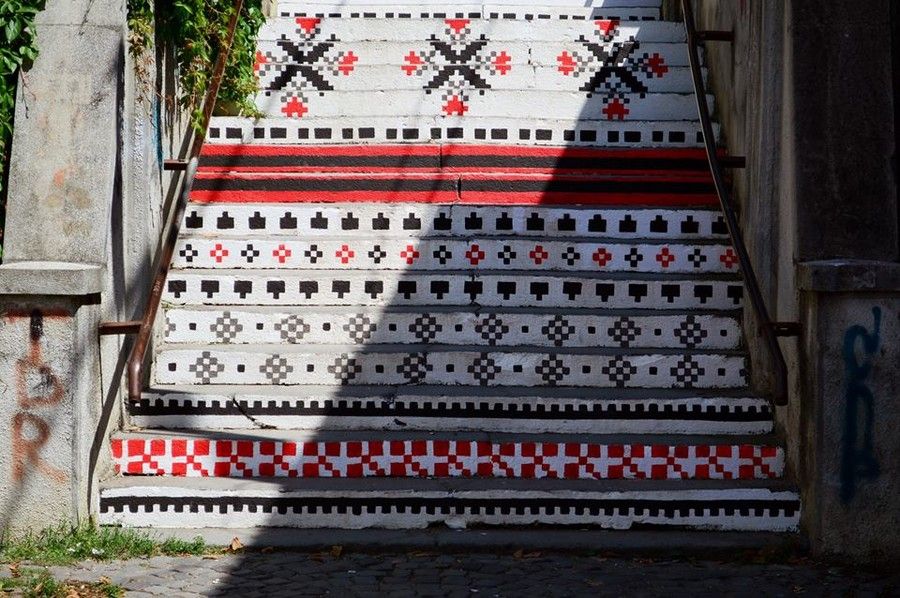
Rakoczi Stairs, part of the Digital Transilvania project in Maramureș. Photo source: Imperialtransilvania.com
Throughout the project, several of the city’s steps were painted with Romanian traditional motifs or with the faces of famous Romanian people, such as Constantin Brâncuși, George Enescu or Liviu Rebreanu.

Stairs in Târgu-Mureș depicting various Romanian personalities. Photo source: Radio Romania Regional
Craiova is another city that unleashed its creativity, turning some of its crosswalks into piano keys, or adding minor details which gave them a whole new meaning.
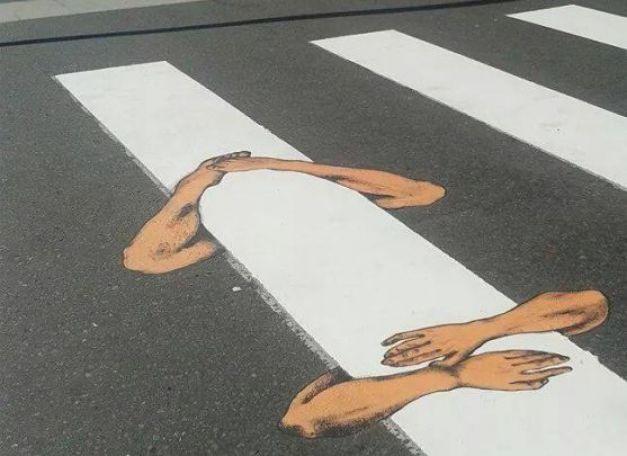
Crosswalk in Craiova. Photo source: Adevarul
In Iasi, the creativity can be observed in the unique trams that roam the streets of the city. The Tram of Literature is an homage to the great poets and writers of Romania, where people can leave books for others to take. Other spectacular trams are the Tram of Ie, the ie being the traditional Romanian blouse, the Tram of Christmas or the Tram of Education. All of them are painted manually by volunteers and students of the College of Arts and are decorated with custom tapestry.

Tram of Literature, Iași. Photo source: Ziarul de Iasi
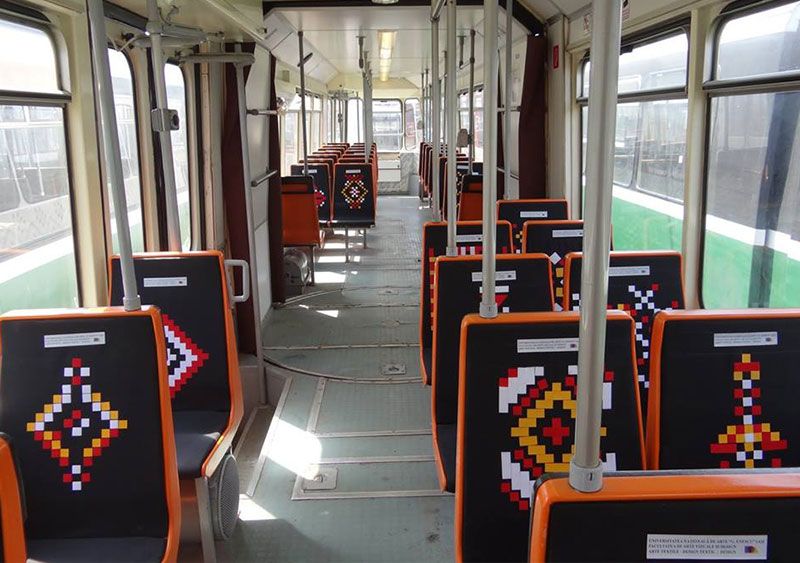
Tram of Ie, Iași. Photo source: Ziarul de Iasi
Even though the art of graffiti started expanding throughout the whole country, Bucharest is by far leading the movement, displaying some of the most impressive pieces of artwork, created either by crews or by individuals.
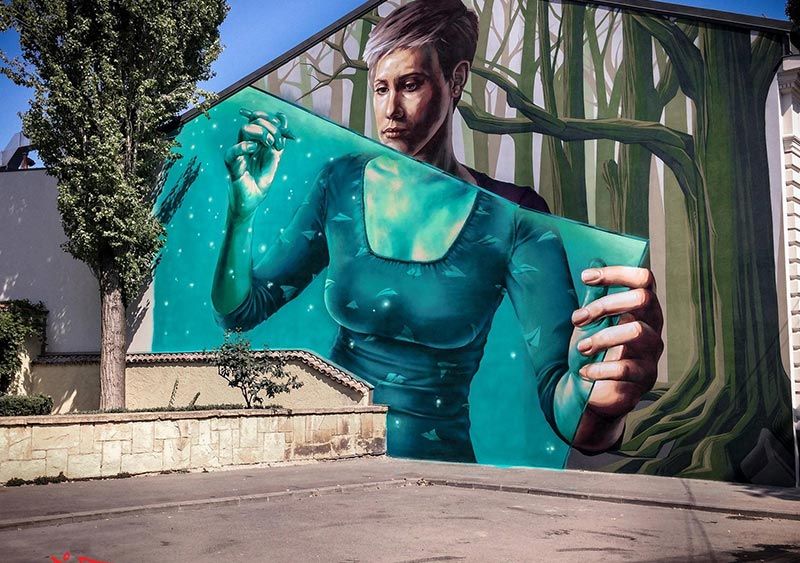
Mural by Sweet Damage Crew on Eremia Grigorescu Street, Bucharest. Photo source: Red Bull
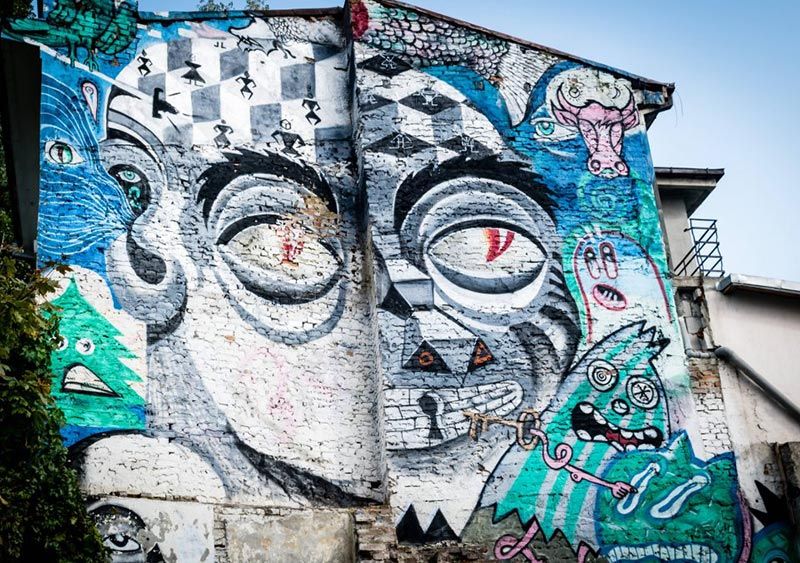
bucharest graffiti Artwork on Berzei Street in Bucharest. Photo by Andra Lazăr
In the end, In Romania, street art started as a way to fight oppression, and it slowly turned into a way to beautify the cities, but often times it goes back to its roots and it encourages people to take action and to fight corrupt systems. Art is a powerful thing, and street art even more so. It can encourage people to take action and change the way a society works, but it can also be used as a tool of vandalism. And sometimes, the line between the two can be very thin.




